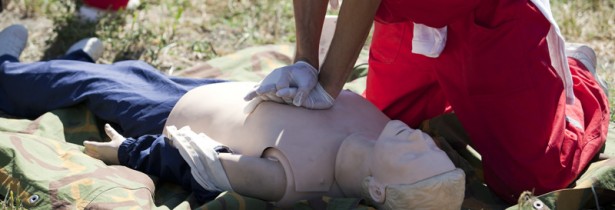Ian Brough, Managing Director at
Building Interiors highlights some of the potential risks and how businesses can better protect employees
If you look around your office right now, can you identify any hazards? If you answered no, you are no different to the majority of employers and employees.
In reality, however, all work spaces have the potential to present risks to health and safety, from slips and trips to fire hazards and even the computers you work at.
Below, I highlight some of the main threats to employers and employees, how you can spot them and what you can do to improve workplace safety.
1) Slips and trips
This is one of the most common factors in workplace injuries and they are usually caused by human error. Some of the things that cause slips and trips include:
- WW
- Floors left wet from cleaning
- Loose doormats, rugs and carpets
- Electrical cables
- Uneven surfaces
- Objects left in doorways
To overcome these hazards, consider employing cleaners out of work hours or, if not possible, ensure they leave out “wet floor” signs to warn employees.
Doormats, rugs and carpets must be secure and trailing electrical cables tied together and, if crossing over a doorway, placed under a tidy.
Uneven surfaces should be clearly marked, and a bit of good housekeeping ensures that items are not left in doorways or places where they present a trip hazard.
2) Fire safety
A fire inside any business can be catastrophic, let alone deadly, so it is important to ensure that you have the correct safety procedures in place.
These are some of the key hazards to be aware of:
- Overheated electrical equipment
- Gas hobs, matches and lighters
- Smoking
- Sources of fuel (paper, packaging, etc)
The most effective way of preventing electrical equipment from overheating is to ensure that is it turned off at the end of the day. This also helps your business be more energy efficient.
Be mindful of gas hobs being left on and ensure that matches and lighters are stored safely and are not left near flammable materials.
Smoking should be banned from inside any workspace and, again, good housekeeping ensures that sources of fuel (paper, cardboard, packaging) are properly disposed of.
It goes without saying that fire exits should not be blocked at any time, and you should hold regular drills to ensure employees know how to evacuate the building in the event of fire.
3) Electrical hazards
Electricity presents one of the greatest risks to employees, and while you may not work with it directly the chances are the equipment you need to carry out your job is powered by it.
To ensure employees are protected, be mindful of the following:
- Damaged cables
- Overloaded sockets
- Electrical equipment near water
- Equipment being used incorrectly
Of course, any office space in the UK should undertake regular portable appliance testing (PAT) to ensure that all electrical equipment is safe to use.
4) Display screen equipment
Falls, fires and electrical faults may seem like common health and safety issues, but a less obvious workplace hazard is the computers, smartphones and screens used by staff.
Potential issues presented by employees spending excessive amounts of time working from screens include:
- Repetitive movement
- Screen glare
- Poor posture
- Long periods of inactivity
To overcome this, it is important to educate employees on good posture and how to set up their desk, chair and computer so that they adopt the best position.
Employees should also be allowed to take regular breaks and perhaps even encourage staff to exercise from their desks.
These are just some of the main workplace hazards, but by undertaking the solutions suggested above you can greatly mitigate risks to employees.


 This pregnancy seatbelt is not only safe, but allows for (more) comfortable third-trimester driving. Finally!
This pregnancy seatbelt is not only safe, but allows for (more) comfortable third-trimester driving. Finally!